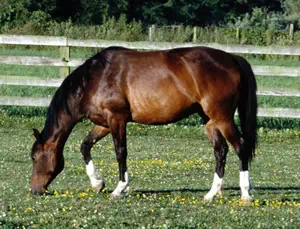|
 NORTH DAKOTA NORTH DAKOTA
Carcass Disposal State Regulations
General
Depending on circumstances, large animal carcass disposal may be regulated by a state's solid waste, medical waste, agriculture, or emergency management regulations. If your state does not provide specific guidance or regulations relating to large animal carcass disposal, check with your local health department, or city/county laws and ordinances.
In addition, during emergency situations and disasters (e.g., blizzards, floods, hurricanes, mass die-offs, etc.), consult with your local emergency officials, your state emergency planning agency, or the state veterinarian, to determine approved methods of carcass disposal.
Applicable Agencies and Regulations for North Dakota
North Dakota Department of Agriculture, Board of Animal Health
Address: 600 E Boulevard Ave, Dept 602, Bismarck, ND 58505-0020
Rules and Regulations: Title 36: Livestock, Section 14: Contagious and Infectious Diseases General: 36-14-19: Disposition of carcass of animal dying from contagious or infectious disease. Must burn the carcasses of animals that died dying of anthrax or hogs dying of hog cholera, or swine erysipelas. Otherwise may be disposed of by burning, burying, composting or rendering with 36 hours
Protecting Your Groundwater through Farmstead Assessment: Assessing Your Livestock and Dairy Operation
(North Dakota State University, 1998). In regard to dead animal disposal, local health laws may be in effect. In the absence of local ordinance, there are three proper ways to dispose of dead animals according to North Dakota law. (This may be outdated in terms of legal requirements). Disposal options addressed:
- Rendering: Must be done within 36 hours of animal's death.
- Burial: Must be done within 36 hours, at least 4 feet deep, and at least 1000 feet from any dwelling house or barn. In areas where high water tables exist, burying is not recommended. Burning then burying is considered a better practice in these areas.
-
Burning: Must be done within 36 hours.
More Information
Guideline 32 - Composting Poultry and Other Dead Animals (North Dakota Department of Health, Division of Waste Management, 2007). Discusses permits, where to set up composting, how to compost and other restrictions, but suggests that it is probably cheaper and easier to reduce mortality (reduce the waste) and, as necessary, arrange for dead animals to be rendered, or send to landfills (there is a list of both).
Protecting Your Groundwater through Farmstead Assessment: Assessing Your Livestock and Dairy Operation (North Dakota State University, 1998). In regard to dead animal disposal, local health laws may be in effect. In the absence of local ordinance, there are three proper ways to dispose of dead animals according to North Dakota law. (This may be outdated in terms of legal requirements). Disposal options addressed:
- Rendering: Must be done within 36 hours of animal's death.
- Burial: In areas where high water tables exist, burying is not recommended. Burning then burying is considered a better practice in these areas.
- Burning: Allowed.
The Cornell Waste Management Institute (CWMI) maintains a database of carcass disposal state regulations promulgated by state environmental, agricultural and other agencies. There may be additional information on this site, not found on VetCA, that can be helpful to veterinarians, ranchers and farmers. Click here to access the CWMI information for North Dakota.

Choose another state
|

